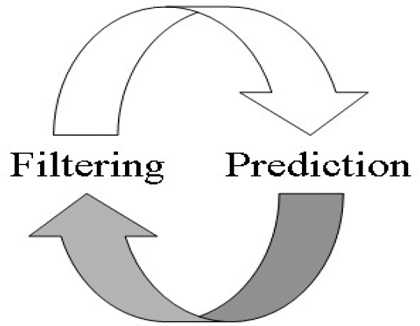Vs: NBA Playoffs 2011 ja Kalman-suodin
Sivuhuomautus:
John Hollingerin työ on ehkä paras ja huonoin esimerkki NBA:n pelaajien ja joukkueiden tilastollisesta analyysistä.
Plussaa: innokkuudesta, näkyvyydestä, osittain tuloksista.
Miinusta: vauhtisokeudesta, mielivaltaisuudesta, "laugh test":ien täydellisestä puutteesta, Insider-juttujen maksullisuudesta.
Tässä ovat Hollingerin ratingit joukkueiden voimasuhteille kauden päättyessä (ts. ennen pudotuspelejä): http://espn.go.com/nba/hollinger/powerrankings
Taustaa:
[quote author="http://insider.espn.go.com/nba/insider/columns/story?columnist=hollinger_john&page=Rankings-Intro"]
Explaining Hollinger's Power Rankings
By John Hollinger
By now, you might have noticed our daily version of power rankings is back up on ESPN.com's NBA page.
These rankings are based on a formula I devised, and they are updated every day, automatically.
I created these rankings to give a quick assessment of all 30 teams so far in the season, since sometimes the standings can be misleading in this department.
Here is some background to help you as you look through the rankings each day.
Scoring margin
One of my goals was to create a system that told us more about a team's quality than the standings do.
So instead of winning percentage, these rankings use points scored and points allowed, which are better indicators of a team's quality than wins and losses.
This might not sound right at first, but studies have shown scoring margin to be a better predictor of future success than a team's win-loss record. Thus, scoring margin is a more accurate sign of a team's quality.
That explains why, for instance, four seasons ago the Spurs ranked ahead of the Mavericks even though they had won nine fewer games -- San Antonio's scoring margin was superior. That ultimately proved to be prophetic, as Dallas lost in the first round of the playoffs while the Spurs won the championship.
Strength of schedule
Yes, this matters in the NBA, too. It is not as profound in the pro game as in the college game, because the 30 NBA teams are more evenly matched, but it still affects a team's results.
This comes into play mainly in the early part of the season, when there can be wide disparities in the quality of competition, but even at the end of the season, there will be differences among teams -- particularly when one conference is far better than the other.
Recent performance
Another key variable in the formula is recent performance, which I included for two reasons.
First, it stands to reason that more recent games are more valid indicators of how strong a team is currently.
Second, I wanted these rankings to follow the model of Marc Stein's "human" power rankings, on the site each Monday, in which a team's recent play is a huge factor.
To accomplish this, I weigh a team's full-season results by two-thirds and its most recent games by another one-third, so the overall ranking gives greater weight to recent games.
You're probably wondering at this point what I mean by "recent." It varies depending on where we are in the season.
For the first 40 games of the season, it means a team's past 10 games.
From that point forward, however, it means the most recent 25 percent of a team's schedule. The net result is that, after the first 40 games, a team's most recent 25 percent of its schedule will account for 40 percent of its ranking.
Home and road
The final variable here is home and road games.
In each game, a team's scoring margin is adjusted by the 3.5-point advantage we (and by "we," I mean the Vegas books, of course) expect the home team to have in a game between otherwise equal opponents.
This can have a large effect at certain points in the season for some teams, as their home and road numbers can get way out of line. This is particularly true for the two "circus/rodeo" teams -- Chicago and San Antonio -- who take at least one extended road trip every season because their arenas are being used for special events and thus end up with a big home-road disparity.
Caveats
Since this is an entirely automated ranking, you'll notice certain "human" factors missing.
It doesn't know which players are about to come back from injury or which teams have been playing without their best players for the past 10 games.
Along the same lines, it doesn't take into account injuries, trades, controversial calls or any other variables -- just the scores, please.
Nonetheless, it can be very useful because it allows us to see what the landscape looks like when we remove our usual filters.
We hope you enjoy our daily power rankings.[/quote]
Ja sitten itse kaava:
[quote author="HOLLINGER'S FORMULA"]
RATING = (((SOS-0.5)/0.037)*0.67) + (((SOSL10-0.5)/0.037)*0.33) + 100 + (0.67*(MARG+(((ROAD-HOME)*3.5)/(GAMES))) + (0.33*(MARGL10+(((ROAD10-HOME10)*3.5)/(10)))))
SOS = Season win/loss percentage of team's opponents, expressed as a decimal (e.g., .500)
SOSL10 = Season win/loss percentage of team's last 10 opponents, expressed as a decimal (e.g., .500)
MARG = Team's average scoring margin
MARGL10 = Team's average scoring margin over the last 10 games
HOME = Team's home games
HOMEL10 = Team's home games over the last 10 games
ROAD = Team's road games
ROADL10 = Team's road games over the last 10 games
GAMES = Team's total games
[/quote]
Rehellisesti sanottuna tuo kaava on täysin mielivaltainen painotettu summa aiemmin listatuista tekijöistä. Painokertoimien arvot on ilmeisesti valittu puhtaasti kokeilemalla, millä arvoilla homma toimii.
Huomatkaa myös mielivaltainen termi "+100", joka siirtää ratingit mukavampaan kohtaa reaaliakselilla.
Hollingerin ratingia on mm. syytetty siitä, että se painottaa liikaa piste-eroja -- otteluiden voittamisen sijaan.
En kuitenkaan halua täysin lytätä Hollingerin ratingia ja syy on tässä:
X-akselilla joukkueiden Kalman-ratingit tämän vuoden runkosarjan loppuessa, y-akselilla Hollingerin vastaavat ratingit.
Ratingien välinen riippuvuus on lineaarista ja ne kertovat lähes täysin samanlaisesta joukkueiden voimasuhteiden arviosta. Ratingien välinen korrelaatiokerroin on 0.9949.
Aikamoista.






